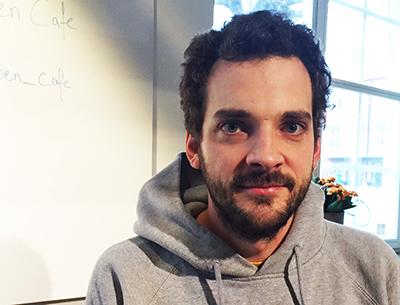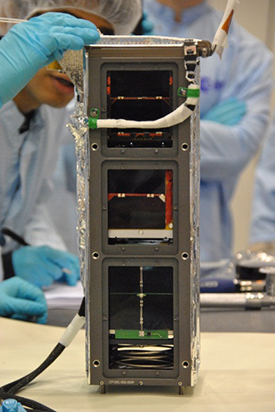Researchers in final running to join NASA/ESA asteroid test

In 2022, NASA plans to ram a 300kg spacecraft into an asteroid, while an ESA-built space probe orbits the egg-shaped body and records the aftermath. A team that includes KTH researchers is among the final five that are competing for their CubeSat designs to be included in ESA's Asteroid Impact Mission (AIM).
In order to boost the scientific return of its joint mission with NASA, ESA put out the call for proposals for two tiny CubeSat satellites to ride along on its AIM spacecraft, en route to the Didymos asteroid system.

In June 2016, the agency is scheduled to select two of the finalists' proposals, which include taking a close-up look at the composition of the asteroid surface, measuring the gravity field, assessing the dust and ejecta plumes created during a collision, and landing a CubeSat for seismic monitoring.
"We are proposing two CubeSats that would characterize the asteroid’s magnetism, surface and chemical composition, and the dust and volatile ejecta being produced by the impact," says Lorenz Roth, a KTH space and plasma physics researcher who is a scientist on the project, which also includes Swedish Institute of Space Physics, ÅAC Microtec, Institute for Space Sciences of Catalonia (IEEC) and the German Aerospace Center (DLR).
The ESA Asteroid Impact Mission (AIM), is undergoing detailed design in advance of a final go/no-go decision by the space agency in December 2016. The deep-space technology-demonstration mission would also be the first probe to rendezvous with a double asteroid.
The Didymos asteroid system is what's known as a binary asteroid; that is, the system consists of a larger body (about 800m in diameter) which is orbited by a smaller, 150m wide moon. AIM and NASA's Double Asteroid Redirection Test (DART) will meet up with the asteroid system during its closest approach to Earth, which is about four times the distance of the Moon.

The CubeSats would be released into the asteroid's orbit from the main AIM spacecraft, which will maintain a safe distance from the asteroid. Cheaper and simpler to build than standard satellites, CubeSats are more cost-effective for this kind of high-risk mission, Roth says.
"Since they don't want the main science AIM probe to be affected by the impact projections, it has to be at a safe distance, so this is where the idea for ESA to deploy CubeSats came from," Roth says. "You can put them close to the asteroid system — and if they are damaged by the impact, then all you've lost is two CubeSats.
It's a small price to pay for gaining a better understanding of asteroids. While NASA's goal is to test if it can deflect an asteroid coming toward Earth, the impact also has potential to reveal information about the composition and nature of asteroids.
Asteroids are still not fully understood, Roth says. And while we know something about the composition of the larger Didymos asteroid, its moon remains a bit of a mystery.
"It's a unique opportunity to measure the composition after an impact," he says.
"I think it's a cool project all-around," he says. "Slamming a 300kg spacecraft into an asteroid and creating your own science experiments — you're really interacting with your target, as opposed to just staring at it."
David Callahan

